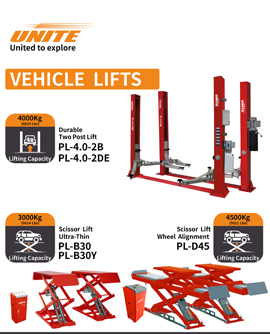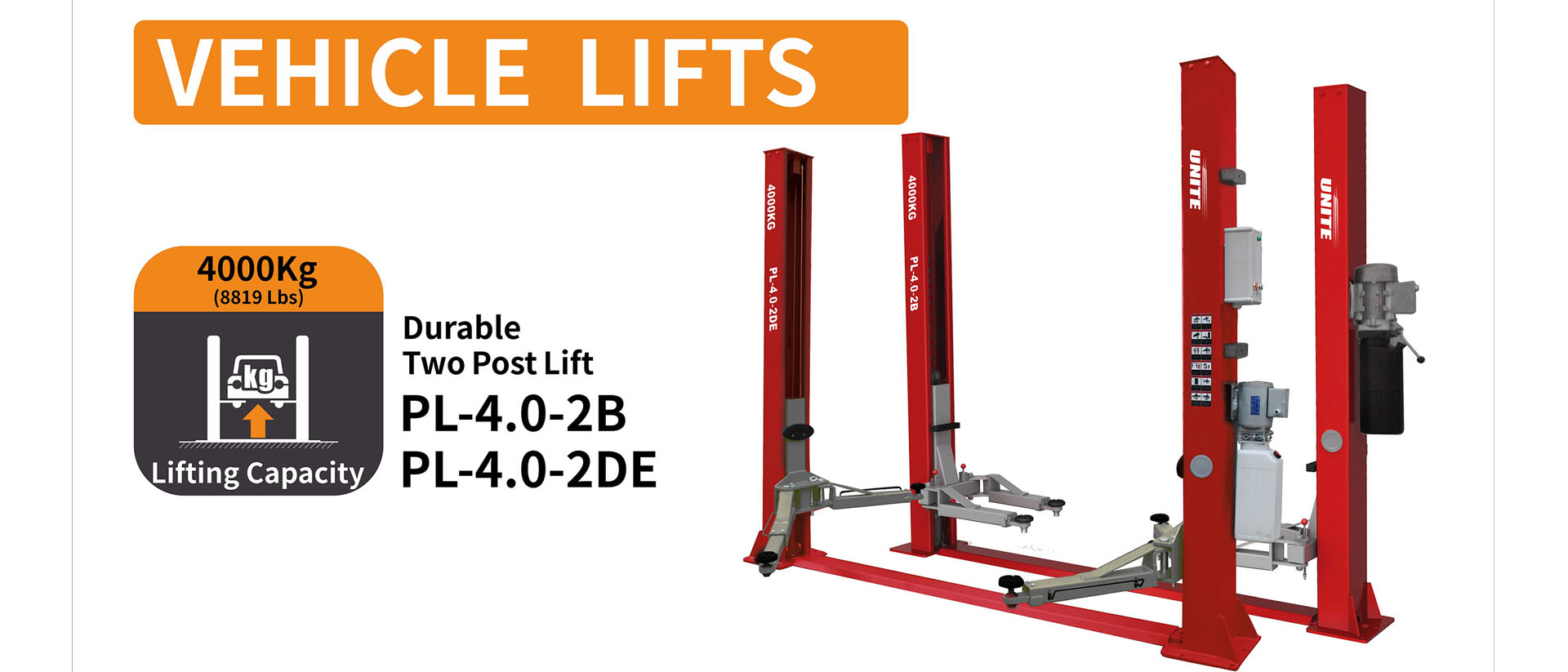
Discusses Some of The Various Vehicle Lifting Equipments
27/08/2019 | Unite Auto Equipment
If you need to lift your car for any reason, you will need to make sure that you have the right device for your purposes. Many home mechanics will want to raise their cars at some point so finding a device that is easy to use and will fit neatly inside your garage is vital.

Here are a few options you should consider.
Car Lifts
A car lift is one of the most used pieces of equipment in any mechanic’s garage. This is because a good deal of the work that needs doing on a modern car must be done underneath it. So, if you are planning to work on the engine or the brakes, you will need a car lift to give you a secure working space.
There are a couple of different types of car lift so you should think about which type will be the best fit for your garage. Don’t forget that you will also need space around the lift and that it should be installed on a level concrete base at least 6” deep. The best advice is that you should measure everything twice before ordering!
Floor Jacks
If you don’t have the space for a car lift, floor jacks are a good compromise. Each jack can be easily maneuvered on its wheels to get it into the right position. To lift your car, you push each of the jacks under the jack mounting point of the car and then use the hydraulic pump to lift the car up. This will take some strength but considering how much you are lifting it is a very efficient method!
Again, you can find a wide range of jacks that are suitable for particular cars or weights. Make sure that you know how much your car weighs before you buy a jack to ensure that it will be able to lift it safely. Most home car jacks will lift up to 2 tonnes but industrial jacks may be able to lift more.
Do remember that jacks are not designed to hold your vehicle up for a long time and you should use axle stands when you are working under a vehicle.
Ramps
The main advantage of a ramp is how easy it is to use. Just make sure that your ramp is the correct size for your tyres so that you don’t run the risk of driving off by accident. All you need to do is position your ramp on some rubber or carpeting and then drive up onto it. Just make sure that your ramp is the correct size for your tyres so that you don’t run the risk of driving off by accident. This is much easier than using a jack and a lot safer too as you don’t need to worry about perfectly lining up your connection points or sorting out axle stands.
To use your ramps safely, you should always apply the handbrake, leave your car in gear and use rear-wheel chocks. This might sound too much, but every step you can take to ensure that your car won’t roll is a step worth taking for your own safety. Plus, these items aren’t particularly expensive so you really might as well add them.
If your car sits low on the road, you will need to be careful about the type of ramp you choose. The steeper a ramp is the more likely you are to cause accidental damage to your bumpers. If you want to play it safe, a longer ramp is always a better option as it will have a shallower incline.
Engine Hoists
Engine hoists are used to lift heavy engines out of cars. There are 3 types of engine hoist including chain hoists (which are essentially a lot of work for a very slow lift), electric hoists and hydraulic lifts. Let’s look at the hydraulic and electric hoists in more detail.
Hydraulic Engine Lift
A hydraulic engine lift uses hydraulics to provide a safe, efficient and easily controlled lift. All you need to do is attach the engine to the boom of the hydraulic lift and then use the winch to increase the pressure and lift the engine out.
It has to be said, that because the winch requires manpower, it is not the fastest method. However, it is a good way to ensure that you are fully in control throughout the lifting process. Plus, as hydraulic engine lifts can lift up to 8 tons, it is suitable for almost any vehicle engine.
Lowering the engine is a lot faster than lifting it as the pressure is decreasing using the bleed valve. This means that you will need to be extra careful during this process.
Electric Hoist
Though this hoist is not especially popular for lifting engines, it is possible to use it for that purpose. The main advantage is that the electric hoist is fully automated and not reliant on you being able to keep adding pressure.
Electric hoists can lift enough weight to deal with most engines but finding one with the right capacity may mean spending a lot more than you would on a hydraulic lift. Another disadvantage is that you will need to choose a specific space to install an electric hoist whereas you can easily more hydraulic lifts around.
Engine Stands
Once you have lifted your engine out of your car, you will need to use an engine stand to store it. Whether you are making repairs to the engine itself or the car, this is the best place to store your engine safely until it can be returned to the car.
One of the main benefits of an engine stand is that you can easily turn the engine to access all the areas you need. This is useful because the engine is very heavy and being able to do this using the stand will save you a lot of time and effort!
Though you can make do with a standard engine stand, you can also add casters, alter the angle of your stand or change up the rotating mechanism to get exactly what you need.
